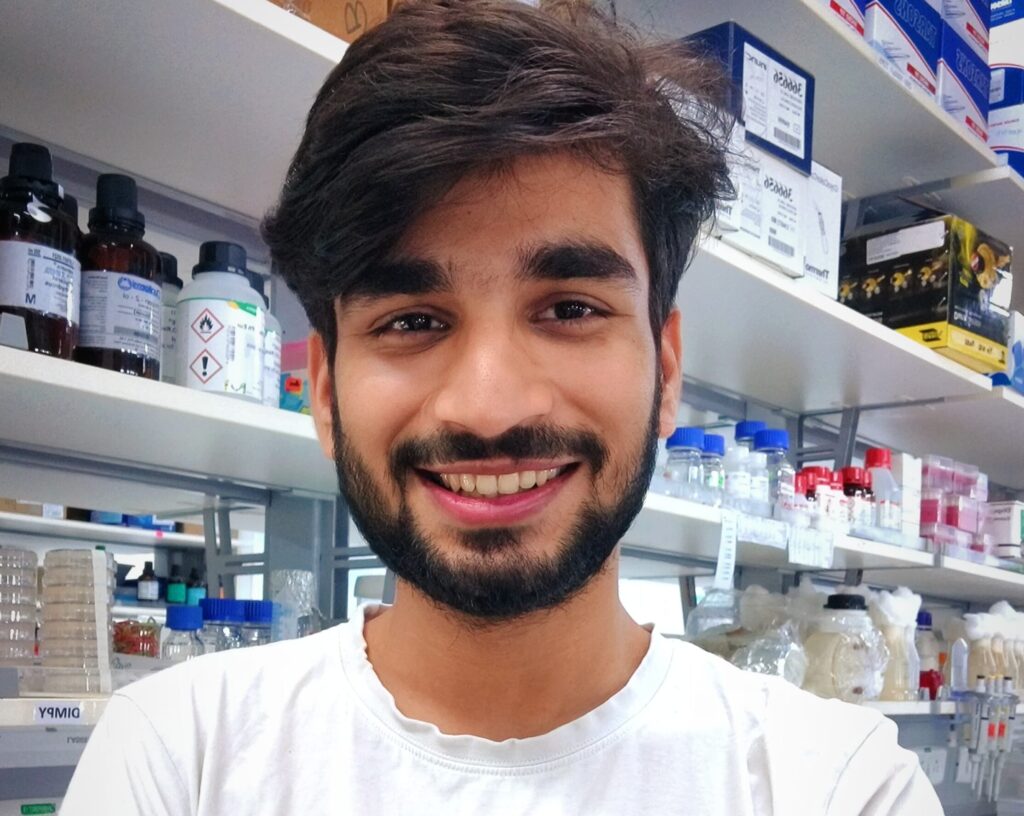Atal is an integrated PhD student in the lab of Dr. Abhishek Bhattacharya at NCBS. He talks about his work on electrical synapses and his experience at InSDB24.

Let’s start from the beginning. Tell us a little bit about the research presented in your winning poster.
Our research focuses on understanding how neurons communicate via electrical synapses. Despite playing critical roles in diverse neuronal circuits, the underlying biology behind electrical synapse establishment and function remains unclear. These synapses are essentially a cluster of gap-junction channels that allow ionic flow between partner neurons. Until now, we know that there exist multiple genes that encode different kinds of gap-junction proteins within a single neuron. Given this observation, we asked questions about the molecular identity of synapses that a neuron makes with its distinct synaptic partners.
That sounds interesting! What have you found out from your studies?
Going against the conventional understanding of electrical synapses being a cluster of a single type of channel, our results, for the very first time, show that a single electrical synapse can be formed by clustering two molecularly distinct gap-junction channels and that they both contribute to the behavioral outputs of the animal. From previous literature, we know that these channels have distinct biophysical properties. We believe that their co-existence in a single synapse opens new avenues of looking into how these channels regulate the synaptic function and whether they also modulate each other’s function. From our data, we report that animals defective in either of these channels exhibit compromised behavioral phenotypes compared to wild-type animals, suggesting that both channels are needed to obtain the desired synaptic function.
Overall, our work provides novel insights into the molecular and functional nature of electrical synapses and their regulation.
That looks promising! Why did you pursue this particular topic for your research? What’s the one thing about your project that keeps you excited?
I have always been fascinated by communication in biological systems across all scales. The fundamentals of how the nervous system functions rely on precise communication between neurons, which inspired me to work on this system. As I read through the literature on synapse biology, I realized that, in comparison to chemical synapses, electrical synapses remain relatively less understood in terms of their assembly and function. Further, reading about the contexts in which electrical synapse function is critical to animal survival, for example, in escape responses, made me even more excited to work on it. During my undergraduate studies, I learned genetics and molecular biology, and hence, my PhD research turned out to be a perfect knit of my interests and training.
Great! Coming to InSDB, among the many posters that were presented at InSDB24, which one intrigued you the most, and why?
It was incredible to see the diversity of posters at InSDB, all being an excellent display of years of handwork. Given the background I come from, I remember one poster from Dr. Shubha Tole’s group wherein the authors took a systematic approach to find the role of a single transcription factor in specifying both gliogenic and neurogenic cell fates in different temporal windows of development. Through a bunch of elegantly designed experiments, their study highlights how intricate the design of transcriptional regulation can be in shaping brain development.
What was the most exciting part of participating in the conference? What are some learnings and takeaways you gained from InSDB24?
The most exciting part of participating in InSDB was that I got a chance to attend incredibly diverse talks that were centered around development. A good takeaway for me was that different biological systems bring their own specific strengths to understand the same question in biology. It was inspiring to see that within a themed session, there were talks from multiple systems, ranging from plants, invertebrates, vertebrates, and cell lines. Each of them came with novel insights that made me appreciate their individual contribution to our understanding of the field. It was fun to draw parallels and to notice how the fundamental principles in biology remain conserved in all systems. The conference also provided me with a great platform to interact with people from diverse backgrounds who generously gave their input and critical feedback on my work.
What are your future plans?
Since I have quite some time remaining in my PhD tenure, my current plan is to add new aspects to the story that I am working on. I plan to decide on a specialization for my postdoctoral research based on my current work.
All the best, Atal, and congratulations on the poster award!





